Bonnie Parker and Clyde Barrow are names that evoke images of daring robberies, high-speed chases, and a defiant stand against the law. Their story is not just about crime but also about the deep bond they shared, making them legendary figures in American history. They were known for multiple murders and bank robberies. From their humble beginnings to their dramatic demise, Bonnie and Clyde’s saga is a compelling narrative of love, crime, and the relentless pursuit of freedom. Uncover the bloody legacy of Bonnie and Clyde. Explore their daring crimes and tragic end that left a mark on history.
Table of Contents
The Early Lives of Bonnie Parker and Clyde Barrow
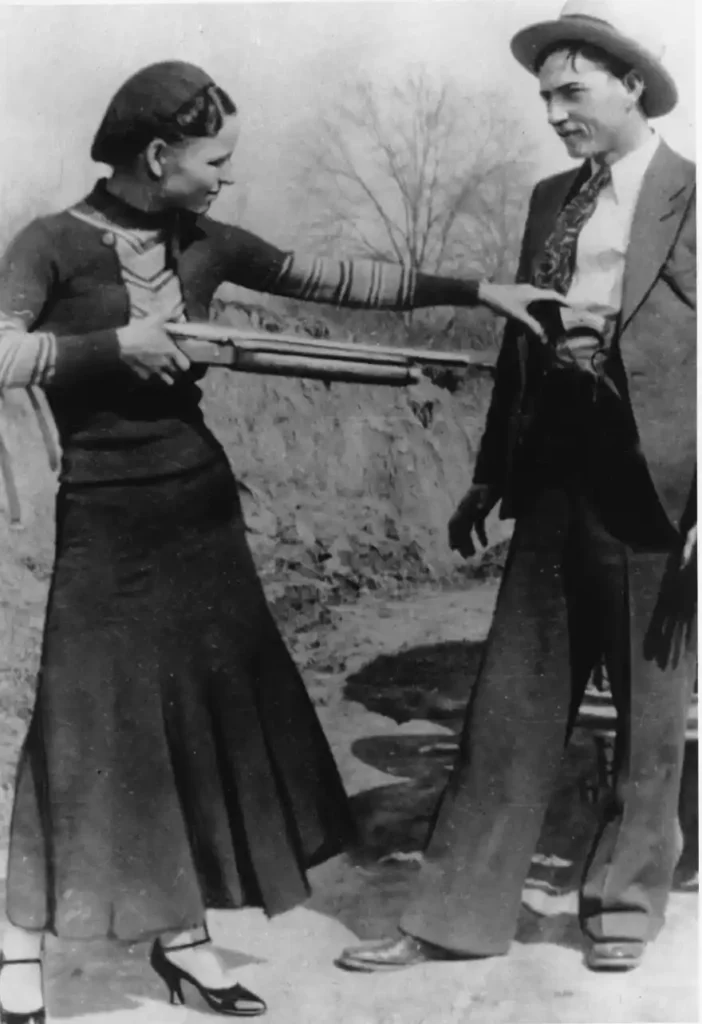
Bonnie Elizabeth Parker was born in Rowena, Texas, on October 1, 1910. After her father’s death, her family moved to Dallas, where Bonnie grew up in a poor but close-knit family. Despite her struggles, she was a bright student and a talented writer, dreaming of becoming a famous poet or actress.
Clyde Chestnut Barrow was born to a poor farming family on March 24, 1909, in Telico, Texas. His early years were marked by poverty, and he soon turned to petty crime. Clyde’s initial arrests for theft and robbery set him on a path that would eventually lead to a notorious criminal career.
The Meeting and Early Relationship
Bonnie and Clyde met in January 1930, and their connection was instant and profound. Bonnie Elizabeth Parker was drawn to Clyde’s rebellious spirit, while Clyde found solace in Bonnie’s unwavering support. Their relationship quickly became the foundation of their criminal partnership.
Bonnie and Clyde’s bond was tested early on when Clyde was imprisoned for burglary. Bonnie’s dedication was evident as she smuggled a gun into prison to help Clyde Barrow escape, though he was soon recaptured. This act of loyalty cemented their partnership, and upon Clyde’s release in 1932, they embarked on a life of crime together.
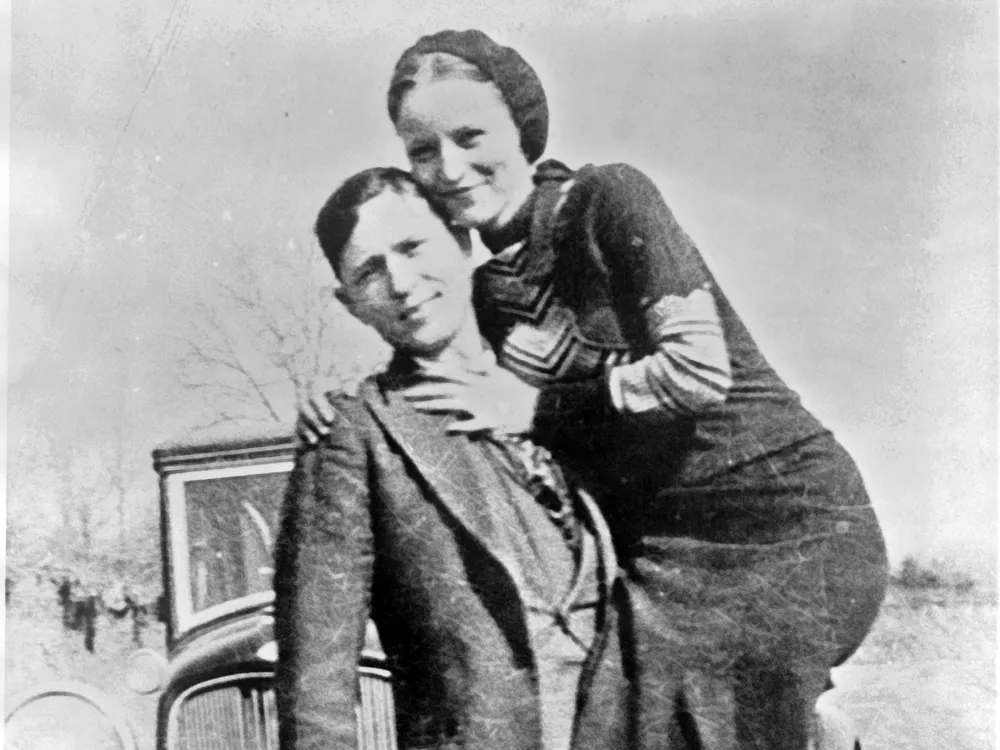
The Beginning of Their Crime Spree
The early 1930s were a time of economic hardship in the United States, and Bonnie and Clyde capitalized on this unrest. Their crime spree began with small-scale robberies of grocery stores and gas stations, gradually escalating to more significant heists. They quickly gained notoriety for their daring tactics and ability to evade capture.
Their first significant crime was a bank robbery in Texas, which began a series of high-profile heists. Clyde’s skills as a driver and Bonnie’s ability to plan and execute their robberies made them a formidable team. Despite their growing criminal record, they managed to maintain a level of charm that intrigued the public and the media.
The Barrow Gang
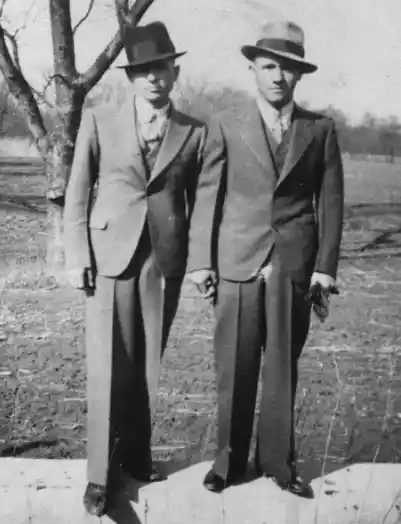
As their criminal activities expanded, Bonnie and Clyde formed the Barrow Gang, which included Clyde’s brother Buck Barrow, his wife Blanche, and other associates. The gang was involved in numerous crimes across several states, including bank robberies, car thefts, and murders.
The Barrow Gang’s operations were characterized by their use of high-powered weapons, stolen cars, and safe houses scattered across the Midwest. Their ability to quickly move from one state to another made it difficult for law enforcement to track them. The gang’s exploits were widely reported in the press, turning them into celebrities, albeit infamous ones.
Public Perception and Media Attention
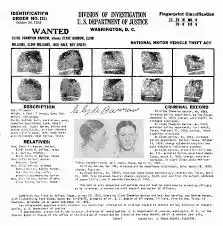
The media played a significant role in shaping the public perception of Bonnie and Clyde. Newspapers sensationalized their crimes, often portraying them as glamorous outlaws defying a corrupt system. Photographs of the couple posing with firearms and their gang members further fueled their legend.
Bonnie Elizabeth Parker, in particular, captured the public’s imagination. Despite her involvement in violent crimes, she was often depicted as a tragic, romantic figure. Her poetry, found after her death, added to this image, revealing a reflective and sensitive side to the infamous outlaw.
The Escalation of Violence
As law enforcement intensified its efforts to capture the Barrow Gang, the level of violence escalated. Clyde Barrow’s determination to avoid imprisonment led to numerous shootouts with police, resulting in the deaths of several officers. The gang’s increasing brutality alienated some of their early supporters and heightened the resolve of law enforcement to bring them to justice.
A significant incident occurred in April 1933 when a raid on the gang’s hideout in Joplin, Missouri, resulted in a fierce gun battle. Two officers were killed, and the gang narrowly escaped. However, they left behind crucial evidence, including rolls of undeveloped film. The photographs, which included images of Bonnie and Clyde posing with weapons, further solidified their notoriety.
The Decline and Final Days
By 1934, the net was closing in on Bonnie and Clyde. Their violent encounters with law enforcement had made them priority targets, and a coordinated effort involving multiple agencies was launched to capture them. Frank Hamer, a former Texas Ranger, was brought in to lead the manhunt.
Hamer and his team meticulously tracked the gang, studying their habits and patterns. They anticipated the gang’s moves and set up ambushes, culminating in a dramatic showdown on May 23, 1934, near Bienville Parish, Louisiana. Acting on a tip, Hamer’s posse lay in wait along a rural road.
The Ambush and Death of Bonnie and Clyde
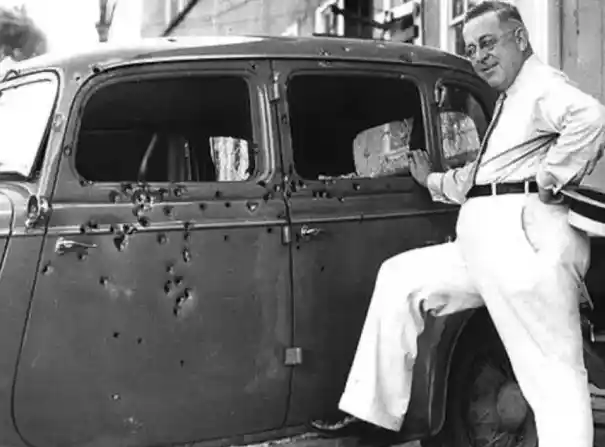
In the early hours of May 23, Bonnie and Clyde drove into the ambush. The posse opened fire, riddling their car with bullets. The couple had little chance to escape or return fire and were killed instantly. The ambush was swift and brutal, ending their crime spree and their lives.
The death of Bonnie and Clyde marked the end of an era. Their bodies were displayed for public viewing, drawing large crowds. Despite their criminal activities, they were mourned by many who saw them as symbols of resistance against an oppressive system.
Don’t miss Danilo Cavalcante: The Escape Artist—a gripping tale of daring escapes and unmatched cunning.
The Aftermath and Public Reaction
The public reaction to Bonnie and Clyde’s deaths was mixed. While some celebrated the end of their reign of terror, others mourned the loss of folk heroes who had become symbols of resistance against a corrupt system. Thousands attended their funerals, and they were buried in separate cemeteries in Dallas, Texas.
Their legacy, however, was far from over. The story of Bonnie and Clyde continued to captivate the public imagination, inspiring books, films, and songs. Their lives and deaths became the subject of endless speculation and romanticization.
Cultural Impact and Romanticization
The cultural impact of Bonnie and Clyde cannot be overstated. They have been immortalized in countless films, notably the 1967 movie Bonnie and Clyde, starring Faye Dunaway and Warren Beatty. This film, in particular, played a significant role in romanticizing their story, portraying them as tragic antiheroes rather than ruthless criminals.
The music world also paid homage to the duo, with songs like “Bonnie and Clyde” by Serge Gainsbourg and Brigitte Bardot capturing the allure of their rebellious spirit. Their story symbolized youthful defiance and the allure of life on the edge.
The Bloody Legacy of Bonnie and Clyde
The story of Bonnie and Clyde continues to captivate the public imagination. Their lives have been immortalized in numerous books, films, and songs. The 1967 film “Bonnie and Clyde,” starring Faye Dunaway and Warren Beatty, played a significant role in shaping the modern perception of the couple, blending historical events with romanticized fiction.
Bonnie and Clyde’s legacy is complex. While they were undoubtedly criminals responsible for numerous deaths and robberies, they also embodied the spirit of rebellion during the Great Depression. Their story raises questions about the nature of crime, punishment, and the allure of outlaw legends.
Similar” Serial Killers ”
- 5 Serial Killers in NC
- What Zodiac Sign Has the Most Serial Killers?
- 5 Infamous Serial Killers That Were Never Caught
- The Chilling Case of Ben Doberman Serial Killer
Conclusion
Bonnie and Clyde remain two of the most famous criminals in American history. Their story is a complex mix of love, crime, and tragedy, reflecting the desperate times of the Great Depression. Despite their criminal activities, the romanticized version of their lives continues to captivate audiences, ensuring that the legend of Bonnie Elizabeth Parker and Clyde Barrow endures.
FAQs
How many people did Bonnie and Clyde kill?
According to the FBI, They have killed at least nine police officers and several civilians, with the total number of victims estimated to be 13.
Who was with Bonnie and Clyde when they were killed?
Bonnie and Clyde were alone when they were ambushed and killed by law enforcement officers.
Where were Bonnie and Clyde shot?
They were shot near Sailes, Louisiana, during an ambush by a posse of Texas and Louisiana officers.
How did Bonnie and Clyde evade capture for so long?
Bonnie and Clyde’s ability to evade capture was due to their mobility, use of powerful vehicles, and strategic planning. Clyde’s driving skills and their willingness to use deadly force also contributed to their elusiveness.
Why are Bonnie and Clyde so famous?
Bonnie and Clyde’s fame stems from their daring criminal activities, romantic relationship, and the extensive media coverage of their exploits. They have been immortalized in popular culture through books, films, and songs.